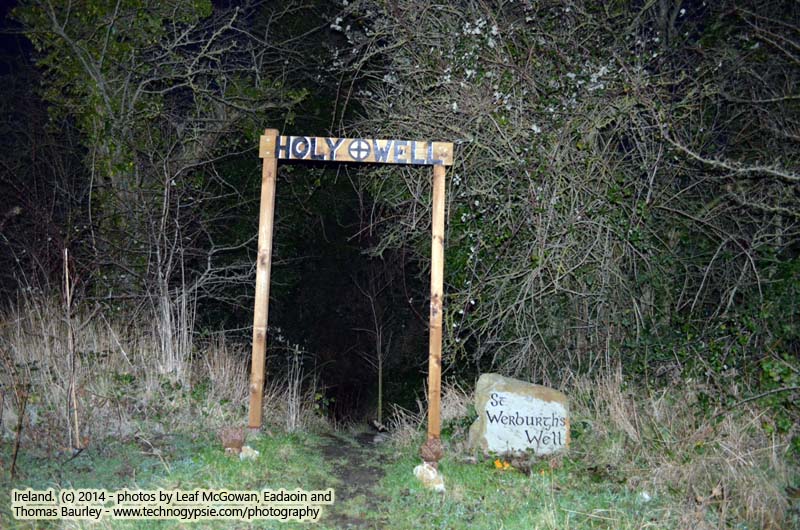The Legend of St. Werburgh
A Mercian princess who converted over at an early age to become a Benedictine nun, through her life became the Patroness of Chester, Abbess of Weedon, Trentham, Hanbury, Minster in Sheppey, and Ely. Even though she was born a princess with royal blood, she cared not for the easy life that came with royalty, otherwise dedicating her life to only do good and make others happy, growing good and wise herself. Although her life fluctuated in various positions and titles in her religious orders, she never changed the humility that had always characterized her, and in her devotion to all those in her care that she was more servant to the people than a mistress. All felt God had rewarded her for her childlike trust by many miracles making her one of the best known and loved of the Saxon Saints.
Villagers and animals alike were said to have come to St. Werburgh to be healed or given advice. She was rumored to have a magical connection with all animals as well, being able to communicate with them just as she could with humans. St. Werburgh became quite taken by a flock of geese that frequented the convent meadows and swam in the pond. There was one goose that became her favorite that she had named Gray king, he had a black ring around his neck and was quite fat, seemingly the happiest within the flock. Unfortunately, Gray King and his flock would often get into the cornfields, infuriating Hugh, the convent steward. Hugh asked Werburgh to handle this trouble.
Werburgh called forth the geese and told Gray King how bad it was to steal the corn and spoil the harvest and left them with simply a scolding, a shake, and a light whipping. She ended the scolding by kissing Gray King before imprisoning them in a pen overnight with intent to gift them convent porridge the next morn before their release. This infuriated Hugh and he felt she didn’t do what he expected to punish them harshly is what they deserved. He hated birds except to feast on. Werburgh told Hugh to serve the geese porridge in the morning before releasing them. He was shocked by this task.
A plump goose as his reward, Hugh ate Gray King as a meal to make up for the lost corn. Werburgh was furious when she learned of this and commanded Hugh to bring her the bones. She punished Hugh to dedicate his life’s study to animals and how to care for them and forbid him to ever eat of bird or beast again, confining him for two nights in the pen where the geese were imprisoned. She took the bones of Gray king and ordered him to rise back to life. She then commanded the flock of geese to leave Weedon, never to return, to which day it is believed that a goose has never entered the village since.
Because of her miracles, her corpse was coveted by many. St. Werburgh instructed that her remains stay in Hanbury, but the nuns of Trentham refused to release them until those of Hanbury took her body to the tomb there and in 708 C.E. her remains were exhumed when she was declared a Saint, in the presence of King Coelred of Mercia and his council. Her second miracle was that her body was found to be incorrupt and in the exact state, it was when she was laid to rest. 875 C.E. she was moved to the Church of St. Peter and St. Paul in Chester, which was renamed and rededicated to her, into a shrine of her honor, where she rests reconstructed today (after being destroyed by Henry VIII).
During Henry VIII most of the Cathedrals were ransacked and relics scattered, although St. Werburgh’s were eventually returned. Most of the figures in the Cathedral were mutilated. The female heads were accidentally placed on male shoulders, and vice versa by the workmen attempting to reconstruct them, and only 30 original figures remain. Today there is a statue of Saint Werburgh with a goose by her side at the Our Lady and St. Werburgh’s Church.
References:
- Bridgett, Ronald W. 1985 The Life of St. Werburgh: Princess of Mercia.
- Brown, Abbie Farwell 2004 The Book of Saints and Friendly Beasts.
- Our Lady and St. Werburgh 2003 The Legend of St. Werburgh. Website referenced 12/23/15 at http://www.ourladyandstwerburgh.co.uk/the-legend-of-st-werburgh.html
- Robert Appleton Co. 1912 The Catholic Encylopaedia, Vol. XV.
- Seomraranga.com n.d. “Holy Wells of Ireland”. Website referenced 12/25/15 at http://www.holywell.seomraranga.com/holywellsireland.htm
- Wikipedia n.d. “St. Werburgh”. Website referenced 12/26/15 at https://en.wikipedia.org/wiki/Werburgh.
- Youtube n.d. “St. Werburgh’s Well, Swords, Dublin”. Website referenced 12/25/15 at https://www.youtube.com/watch?v=Gdqude7t14M.

Discover more from The Naiads Well
Subscribe to get the latest posts sent to your email.
